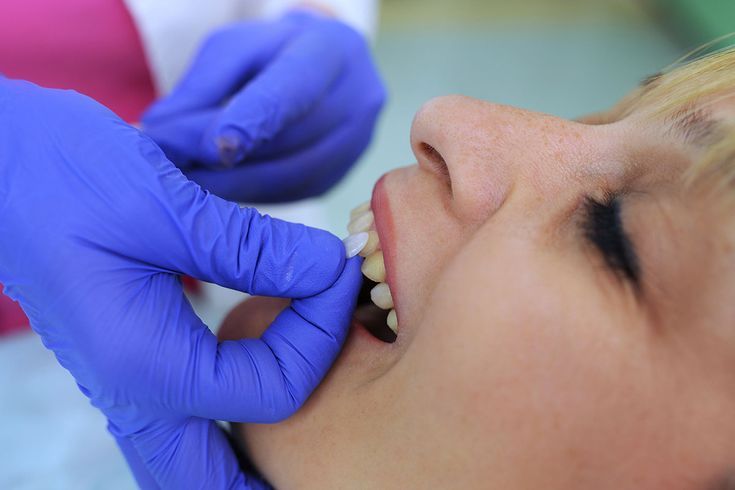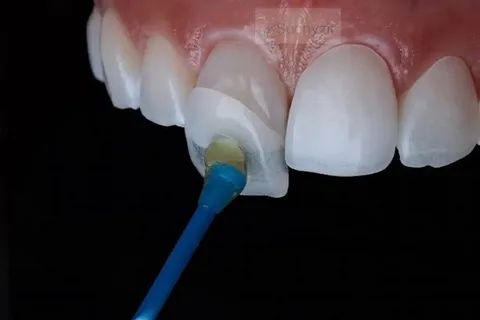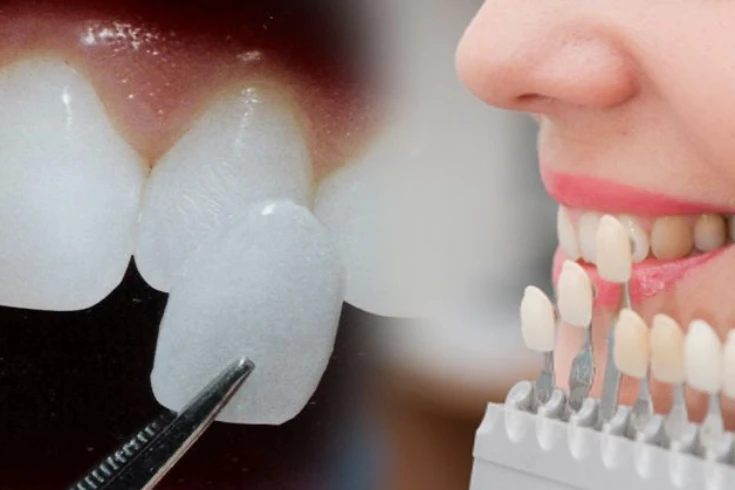Through the years, orthodontic treatments have transformed into a wide array of braces options to fit each particular individual’s needs. Of all the available options for one to choose from, among the most popular is lingual braces, which discreetly yet efficiently align crooked teeth. This account shall seek to cover everything that you ever need to know concerning lingual braces. This includes benefits, costs, and how it contrasts with traditional braces.
What Constitutes Lingual Braces?
Lingual braces are like any other braces, except that they have one key difference: they are attached to the inside of the teeth, making them almost invisible from the front. It is for this reason that lingual braces have become extremely popular among people who need to straighten their teeth but do not like wearing obvious orthodontic appliances.
How Do Lingual Braces Work?
Lingual braces work just like traditional braces. They make use of brackets and wires that move teeth gradually into their desired position. Since these are placed behind the teeth, these need to be specially customized. The brackets are contoured to the exact shape of the back of each tooth to ensure comfortability during treatment and effectiveness in results.
Traditional Braces Vs. Lingual Braces: Which Is Better?
Among orthodontic treatments, the weighing of the difference between traditional braces vs lingual braces is sometimes important. Here’s a comparison that may be helpful in making your decision:
- Aesthetics: One of the main reasons people wear lingual braces is because they are less than obvious. Unlike other traditional braces, which attach to the front of the teeth and are quite conspicuous, lingual braces are well hidden from view. This will make them a suitable choice for adults and teens concerned about the looks of having to wear braces.
- Comfort: Being on the front surface of the teeth, traditional braces might be more comfortable for some people than lingual ones, as they may cause discomfort or irritation in the tongue at the beginning. But as the mouth gets used to it, most patients settle into it.
- Treatment Time: Both types of braces require the same time, which primarily depends on the dental issue being treated. However, because lingual brackets are made to order, the treatment may take a little longer.
- Cleaning and Maintenance: Both types of braces require good oral hygiene. However, the lingual braces are somewhat more complex because placing them on the inner side of the teeth necessitates special care. The dentist provides special attention and uses additional to ensure that food particles and plaque do not build up around the brackets.
- Cost: Compared to traditional braces, the cost of lingual braces is relatively a little higher due to the customization that it requires. Later in this article, we look at the cost in detail.
Lingual Braces Cost: What to Expect
The process of installing lingual braces and tailoring them for individual patients is complicated. This is why prices tend to be higher compared to traditional braces. The table below will show the average lingual braces:
| Cost Factor | Price Range |
| Average Cost | $8,000 – $13,000 |
| Cost With Insurance | Partially covered (depends on plan) |
| Cost without Insurance | $8,000 – $13,000 |
| Consultation Fee | $100 – $300 (sometimes free) |
| Monthly Adjustment Fees | $100 – $200 per visit |
| Initial Placement Fee | $500 – $1,500 (included in total cost) |
| Additional Fees (Retainers, etc.) | $500 – $1,000 |
Factors influencing the lingual braces cost
The cost is determined by several factors, including:
- Complexity of the Case: This includes the manner in which your teeth are aligned and the period that treatment will take. The more complicated cases take longer than others and will also need more adjustments, hence the price appreciation accordingly.
- Geographical Location: The charges of dentists depend upon the location where they are practicing. Cities have more charges in general, compared to countryside areas.
- Orthodontist Expertise: When there is an orthodontist whose specialty is lingual braces, and has been doing it for a long period, then his charge may be high for the professional service.
- Insurance Coverage: Some dental insurance plans, due to the high cost, will pay a portion of the braces’ cost, including lingual. It is crucial to check with your insurance provider the extent to which it covers it.
The general cost estimate for lingual braces ranges between $8,000 and $10,000, while that of the conventional braces usually ranges between $3,000 and $7,000.
Pros and Cons of Lingual Braces
Before you decide whether these braces are the right fit for you, consider the following pros and cons:
Pros of having these Braces
- Invisibility: The number one positive aspect of these braces is invisibility. This is an excellent appliance for anyone who does not want to draw attention to their orthodontic treatment.
- Customization: Since each bracket is custom-fit to the back of your tooth, that in itself is a very precise and effective treatment plan.
- Suitable for complicated cases: Lingual brackets are flexible, with their application widespread in the treatment of conditions relating to orthodontic problems, such as crowding of teeth, gaps between teeth, and malocclusion.
- Lingual Braces for Overbite: An overbite occurs when the upper front teeth overlap the lower front teeth excessively. Lingual braces can be used to gradually shift the teeth into a more aligned position. Therefore the lingual braces for overbite will help to correct the bite and improves the overall appearance of the smile.
Cons of having these Braces
- Higher Expense: As mentioned previously, these braces are more costly than other braces. Therefore, it is out of reach for some people because of the expense.
- Discomfort: The braces chafe the tongue initially and impede speech. This usually decreases over time as one gets used to them.
- Difficulty Cleaning: With the presence of these braces on the inside of your teeth, it is not easy to clean your teeth as you should.
Who Should Consider Lingual Braces?
Lingual braces are intended for anyone who wishes or needs orthodontic intervention with some discretion. Still, they are most precious in the following conditions:
- Adult patients: For adults who are very sensitive about wearing normal braces, these braces could be a favorable option because they are positioned out of sight.
- Teenagers: Most teenagers are uninterested in looking as if they have some form of mental within their developing years. Hence, these braces have been appealing to them.
- Professional: If you are one of those professionals who often need to speak in public or present something, then these braces can be a good choice for you as it would allow you to maintain your professional look.
They cannot be used if one suffers from some specific dental conditions or even if the teeth are too small. In that case, there is not enough space to fix the brackets comfortably.
Alternatives of Lingual Braces
In case these braces are not the right choice for you, then you can consider several alternatives to:
- Traditional Braces: Metal or ceramic braces that line the front of the teeth are quite visible but also quite effective across a wide range of orthodontic issues.
- Clear Aligners: Invisalign and similar devices use a series of clear plastic trays to move the teeth gradually. They are removable and nearly invisible, making them one of the popular options among adults.
- Ceramic Braces: These are also very similar to the traditional braces but are made of tooth-colored materials so that they can be as inconspicuous as possible.
Tips for Reducing Lingual Braces Cost
There are several ways you can follow to reduce the cost. Some of the tips or ways to reduce the cost are:
- Insurance Coverage: Check if your dental insurance plan covers orthodontic treatments, including lingual braces. Even partial coverage can significantly reduce your overall expenses.
- Flexible Payment Plans: Inquire about flexible payment options offered by orthodontists. Many practices allow you to spread the cost over several months or years.
- Use Health Savings Accounts (HSAs): If available, use HSA or Flexible Spending Accounts (FSAs) to pay for orthodontic treatments. These funds are tax-free.
- Consider a Payment Upfront Discount: Some orthodontists offer discounts if you pay for the entire treatment upfront instead of in installments.
- Ask About Promotions or Discounts: Check for any current promotions or discounts that the orthodontist may be offering for new patients or for paying in cash.
Conclusion
Lingual braces are a very good option for people who want inconspicuous orthodontic treatment. In comparison, these braces are more costly than traditional braces or transparent aligners. However, to many, the virtue of almost invisible treatment, along with being able to correct complex dental issues, makes the investment worth it. If you consider orthodontic treatment, seek an experienced orthodontist who will be able to advise you on the best alternative. Whichever your choice might be- lingual braces or traditional braces, or even another alternative- you have reached that beautiful, straight smile, which means an investment in your confidence and oral health.
FAQ’s
Are there any alternatives to Lingual braces?
Yes, there are alternatives to these braces. Some of the alternatives include:
- Traditional braces: Metal or ceramic braces placed on the front of the teeth.
- Clear aligners, Such as Invisalign, are removable and nearly invisible.
- Ceramic braces: Similar to traditional braces but made from tooth-colored materials.
How can you reduce the cost of lingual braces?
You can reduce the cost by following the options below:
- Check your dental insurance for coverage options.
- Inquire about flexible payment plans.
- Use Health Savings Accounts (HSAs) or Flexible Spending Accounts (FSAs).
- Look for discounts to pay upfront or for current promotions.
Are lingual braces worth the investment?
They can be worth the investment for those seeking an inconspicuous orthodontic solution. While they are more costly than traditional braces, the benefits of discretion and effectiveness in treating complex dental issues often justify the expense.





